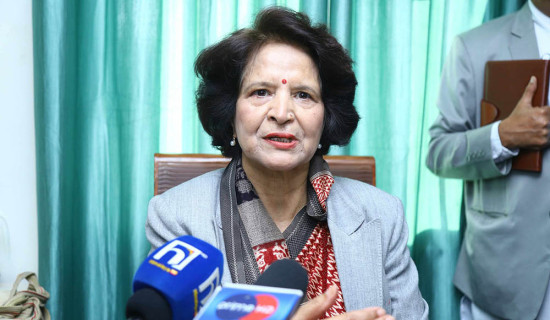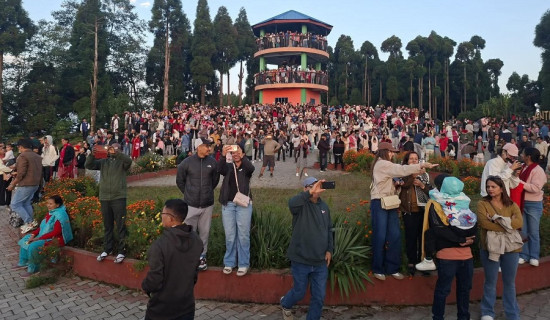- Friday, 2 January 2026
Check Internal Displacement
Bini Dahal
As the world continues to face numerous contemporary issues such as conflicts and natural calamities, the number of people suffering from them is rising day by day. Today, a large number of people are refugees, seeking asylum in other countries. Moreover, within national borders as well, people are forced to move to other cities or regions, a phenomenon referred to as internal displacement.
The Internal Displacement Monitoring Centre (IDMC) has lately released a distressing figure in its 2024 Global Report on Internal Displacement (GRID) on internally displaced people worldwide. According to the organisation, by the end of 2023, a total of 75.9 million people were living in internal displacement globally, with 47 million new displacements recorded within the same year.
The report identifies a growing number of conflicts and cases of violence as the primary factors driving people out of their homes. It highlights that the armed conflict in Gaza City and northeast African nation Sudan alone account for displacement of 17 per cent and 30 per cent, respectively. These figures are out of the total of 20.5 million people affected. The study also shows how climate-induced displacement has become an aggravating and persistent problem. The high magnitude earthquake in Turkiye and Syria, cyclone Freddy in southeastern Africa and cyclone Mocha in the Indian Ocean are said to have caused 26.4 million to move to other parts of their countries.
While issues like migration remain a key priority of countries and the international community, internal displacement is not yet recognised as a trending problem. An internally displaced person may reel from a number of problems. The phenomenon can prevent people from getting access to adequate food, health, education and other services. Also shelter problems can arise, where they are unable to adapt to the host communities. It is said that those displaced suffer from a higher mortality rate as compared to the general population. Such people, especially women and children, may also have to face safety-related issues as they can become easy target of sexual violence and attacks.
The core problem of this issue is that it can affect a country’s economy. In the case of Nepal, the mega earthquake of 2015 had caused the country to suffer a two per cent loss in economic growth while displacing 2.6 million people. This is because once displaced, most people are unable to carry out livelihood-related activities. This scenario is more harmful for those having a low income source and a poor livelihood. Overall, the basic rights of people get violated because of internal displacement. The growing number of internally displaced people puts a pressure on governments and the international community to look into the matter seriously.
The concerned stakeholders must provide required financial assistance and other support to improve the condition of such individuals. It is essential for governments to work towards preventing internal displacement from happening through proper strategies and mobilisation of institutional mechanisms. Host communities also have an important role to play when it comes to supporting the displaced people. As long as internal displacement is not prioritised and managed well, it can further affect a country’s economy and the people socially and economically. Therefore, the global report should be taken into consideration by the policymakers around the world to tackle this burning problem.
















